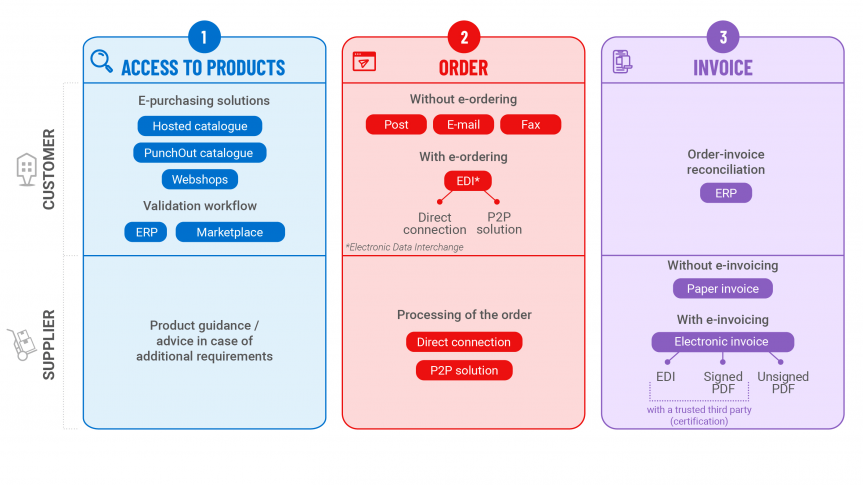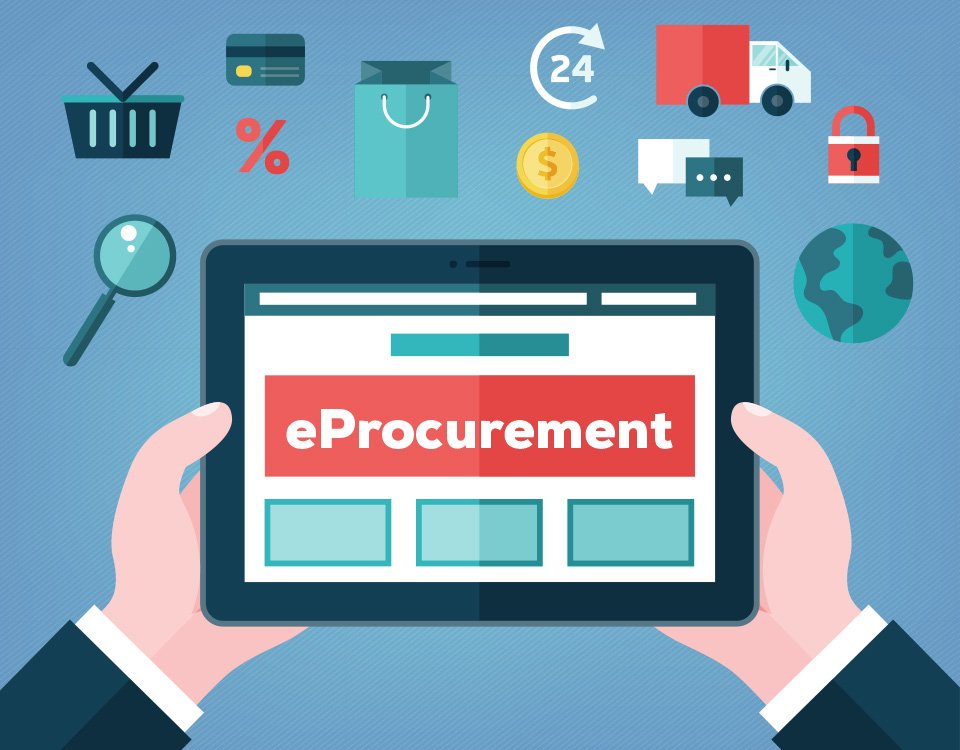E-procurement uses digital tools to digitize business transactions between buyers and sellers, allowing for better process management and increased efficiency. Learn everything you need to know about e-procurement in this article so that you have the resources you need to successfully implement it in your business.
What is meant by “e-procurement”?
“The centralised management of a company’s procurement and supply chain using an electronic platform” is what e-procurement refers to. “Electronic” is what the “e” stands for. It’s also referred to as supplier exchange on occasion.
The fact that e-procurement is only appropriate for business to business (B2B) transactions must be remembered. The Business to Customer (B2C) market, which deals only with private purchases, does not use it.
Through the use of information systems and software, e-procurement makes it possible for purchases to be made entirely or partially paperless during the Procure-to-Pay (P2P) process, which consists of three main stages:
- choosing of products;
- dispatching the order;
- billing and receiving money.
E-sourcing: What is it?
It is significant to remember that e-sourcing, which concentrates on the Source to Contract (S2C) procedure, is treated differently from e-procurement. E-sourcing digitizes the Source to Contract process—which includes identifying and choosing suppliers—by using digital tools.
E-procurement is for whom?
E-procurement primarily pertains to four distinct groups within organizations:
- The department responsible for defining and refining procurement strategy;
- the final consumers who place the order and are the source of the need;
- the individual who grants orders;
- The accounting and finance departments handle payment processing and order reconciliation.
How is e-procurement carried out?
Three primary steps that are unique to the Procure-to-Pay process comprise e-procurement.

1. Selection of products
Businesses go to a designated platform, which could be a B2B vendor website, an online catalogue, or a Punch-Out. They can now view the supplier’s complete offer, along with information regarding the terms of the contract (i.e., the products that were chosen, the price, the savings, etc.).
With a single click, they choose their products and submit their purchase request. After that, this request goes through their procurement system and the pre-established approval procedure.
2. Sending the order
The purchase request becomes an order after it is approved. It is automatically transmitted via a marketplace or as an electronic document to the supplier. At that point, the supplier starts getting the goods ready for delivery right away.
3. Receipt of the invoice
Paperless invoicing is another option. Businesses receive an electronic or PDF invoice that has been verified by a third party, which is then automatically reconciled with the order and initiates payment.
What are the e-procurement’s goals?
To enhance the effectiveness of the procurement process, management, and strategy, e-procurement centralizes and automates interactions between stakeholders (end users, procurement department, suppliers, etc.). There are four main advantages.
1. Savings
A 100% digital transaction (from product selection to payment) is estimated to cost less than $16, whereas a standard transaction is estimated to cost an average of $80. Since the process is fully automated, one explanation for this is the lower cost of labor resources. The savings are significant in relation to the number of orders, particularly for indirect purchases.
2. Discontinue low-value operations
Eliminating manual and administrative tasks is a smart strategy to boost team productivity and speed while lowering error rates by 30–50% on average. Sending the purchase order, getting approval, and balancing the invoice and order are all automated processes with e-procurement. Teams can now concentrate their efforts on projects that have a larger added value.
3. Cutting the total duration short
Order placement and approval processes are more efficient and transparent for businesses because there is less downtime, less need for reminders, and less handling and filing of administrative paperwork. This expedites the procurement process significantly.
Companies also receive their goods faster because the order is directly converted into a preparation slip for the supplier.
4. Controlled spending
Through reporting features, e-procurement offers improved visibility, including a clear, real-time view of spending (principals, procurement process, etc.). Thus, they are able to:
– more effectively control their expenditures;
– Boost accuracy in cost and budget management;
– Assess areas for improvement and modify their approach accordingly.
What benefits and limitations can a digital procurement process offer?
The biggest advantage of e-procurement is the reduction in invoicing costs, among its many other advantages. The digitisation of procurement procedures leads to cost reduction and improves business transactions between suppliers and companies.
It is also a true management tool because it frees up buyers’ time and energy to concentrate on their main business instead of wasting it on laborious, low-value tasks. As a result, the procurement department’s services are of higher quality, and employee productivity rises.
But before it can be put into practice, e-procurement needs to be thoroughly studied in terms of available service procurement systems and procurement software. Including all parties involved in the procurement process is the aim of an e-procurement tool.
The e-procurement software is another limitation of this business solution. Users may find these workflow management systems difficult to use.
On the other hand, suppliers are compelled to offer an electronic catalog and adjust to the order placement tools that their clients demand.


